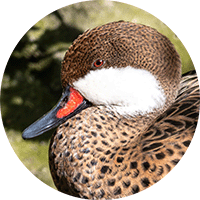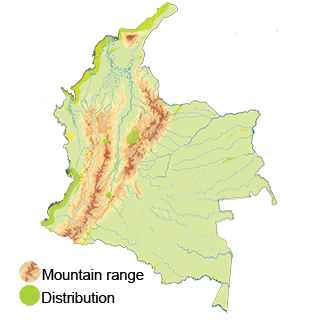White-cheeked Pintail
Appearance: The White-cheeked Pintail is a medium-sized duck (43 cm - 17 inches) with a distinctive appearance. It has a reddish-brown head, white cheeks, a dark brown back, and a grayish-blue bill. Males and females have similar plumage, although males may have more vibrant colors during the breeding season. Juveniles are duller in coloration.
Habitat: The White-cheeked Pintail inhabits a range of wetland habitats, including freshwater marshes, lagoons, mangroves, estuaries, and coastal areas. It can be found along both the Pacific and Caribbean coastlines, as well as in inland wetlands. Found up to 2600 m altitude.
Behavior: White-cheeked Pintails are dabbling ducks, meaning they feed by tipping their heads underwater and foraging on aquatic vegetation, seeds, and invertebrates. They are seen in small groups or pairs and are known for their relatively tame behavior, allowing close approaches by observers.
Breeding: The breeding season for White-cheeked Pintails varies geographically but occurs between April and July. They make nests in grassy areas near water, constructing a depression lined with vegetation. The female lays around 6 to 8 eggs and incubates them for about 25 to 28 days. Once hatched, the ducklings are precocial, capable of swimming and feeding independently shortly after birth.
Conservation Status: The White-cheeked Pintail is considered fairly common and is not listed as a near threatened species of lesser concern.
Distribution
Caribbean Coast: The White-cheeked Pintail is present along the Caribbean coast of Colombia, including regions such as La Guajira, Magdalena, Atlántico, Bolívar, and Sucre. It can be found in coastal lagoons, estuaries, and wetlands, often in proximity to mangroves.
Pacific Coast: This duck is also observed along the Pacific coast of Colombia, including areas such as Chocó and Valle del Cauca. It inhabits coastal wetlands, lagoons, and estuaries in this region.
Inland Wetlands: While the White-cheeked Pintail is more commonly associated with coastal areas, it can be found in some inland wetland habitats in Colombia. These include freshwater marshes, ponds, and lagoons scattered across the country, where suitable conditions for this species are present.
Taxonomy
- Kingdom: Animalia,
- Phylum: Chordata,
- Class: Aves
- Order: Anseriformes,
- Family: Anatidae
- Genus: Anas
- Species: Anas bahamensis
Vocalization
Quack: The most recognizable vocalization of the White-cheeked Pintail is the classic "quack" sound commonly associated with ducks. The male pintails typically have a lower-pitched and softer quack, while the female's quack is usually higher-pitched and louder.
Whistle: The male White-cheeked Pintail often produces a melodious, high-pitched whistle, which can be described as a series of clear, descending notes. This vocalization is usually a part of courtship and territorial displays.
Chattering: During interactions or when the duck is agitated, the White-cheeked Pintail may emit a series of rapid, chattering or chittering sounds. These sounds are usually short and rapid in succession.
Grunting: When the White-cheeked Pintail is startled or alarmed, it may emit a series of deep, guttural grunting sounds. These grunts are typically brief and distinct.
Whining: Young or fledgling White-cheeked Pintails may produce a soft, high-pitched whining sound when communicating with their parents or siblings.
Share blog posts, products, or promotions with your customers. Use this text to describe products, share details on availability and style, or as a space to display recent reviews or FAQs.





